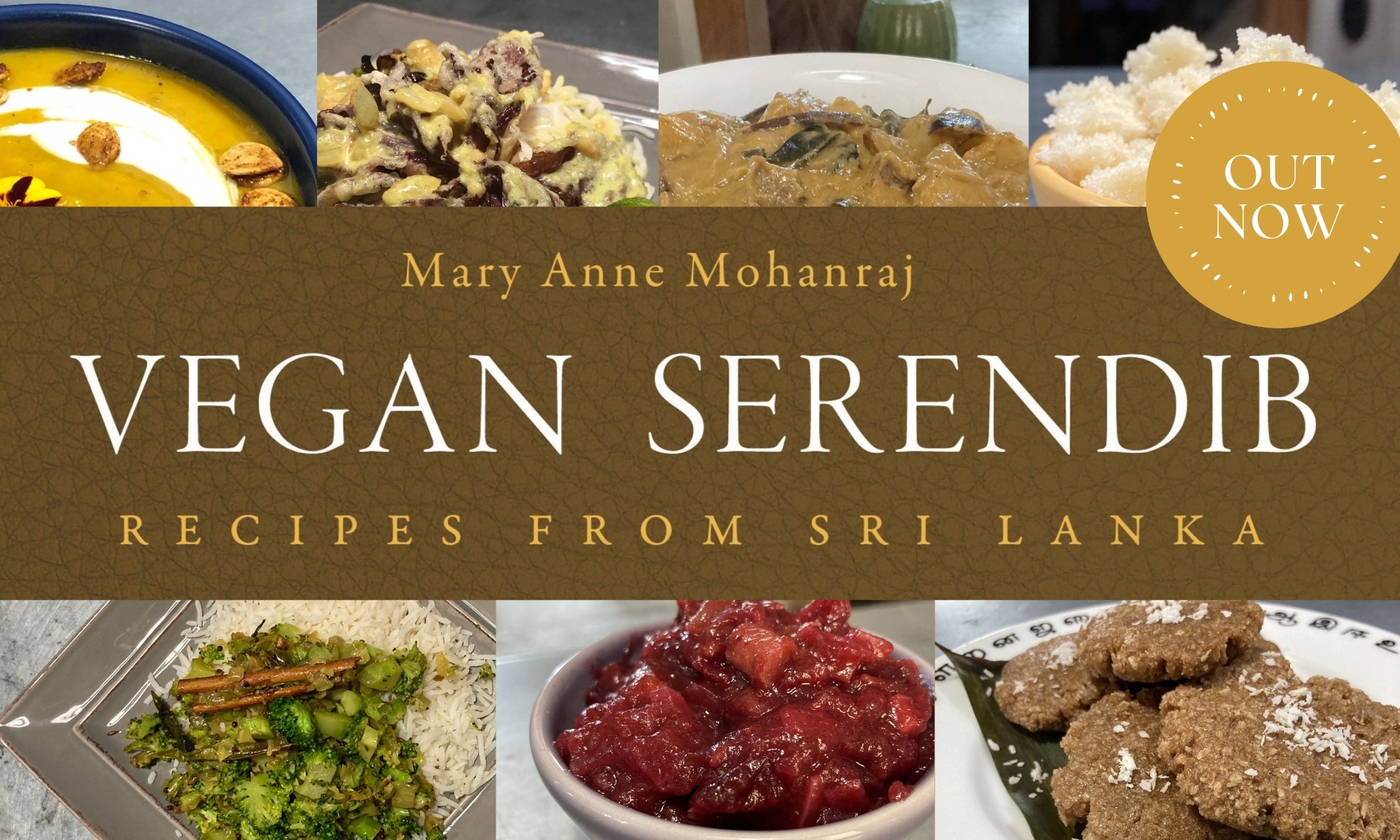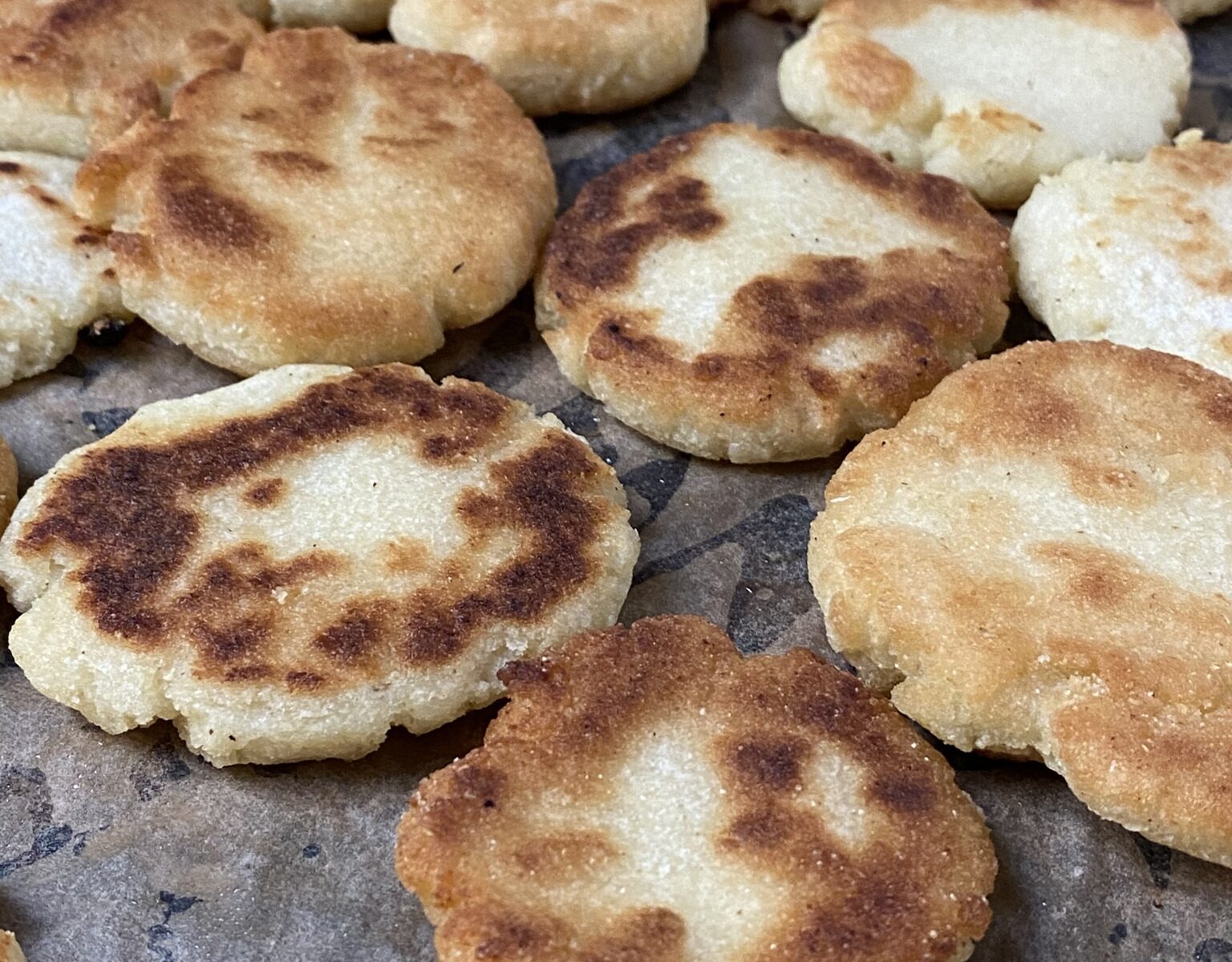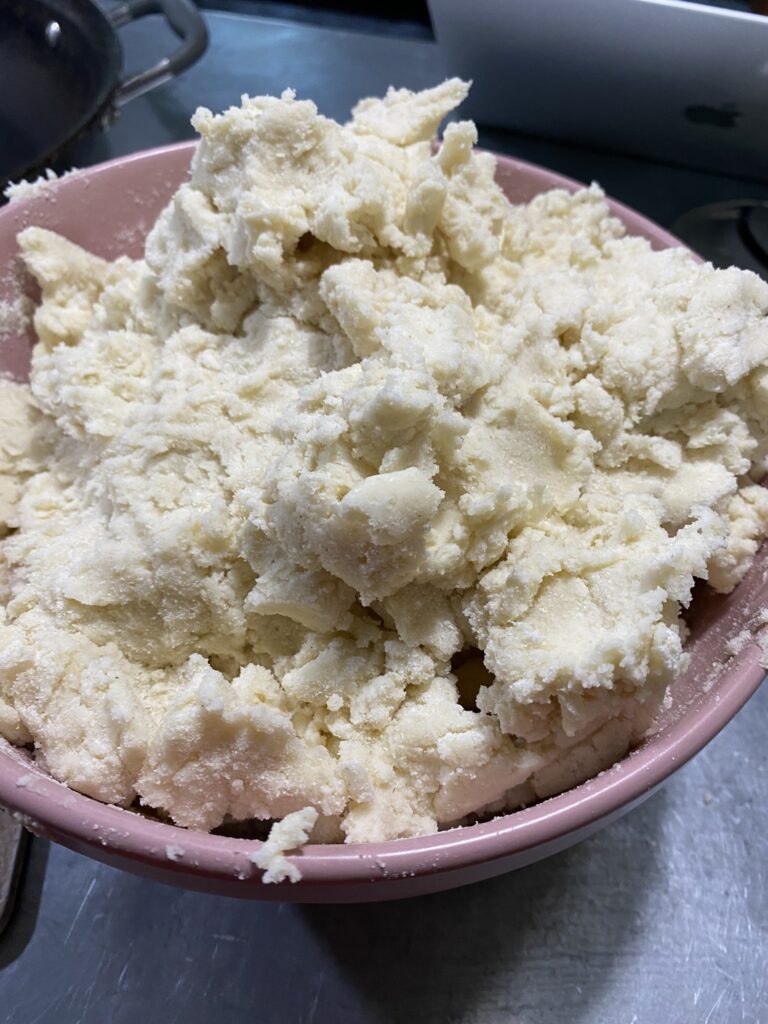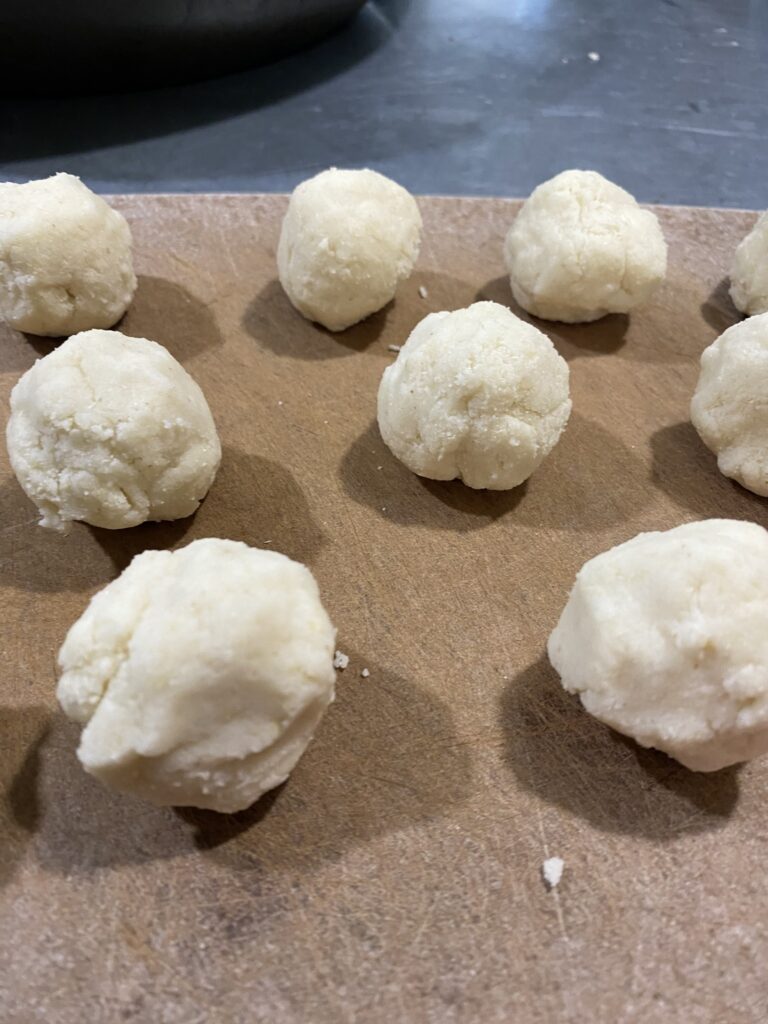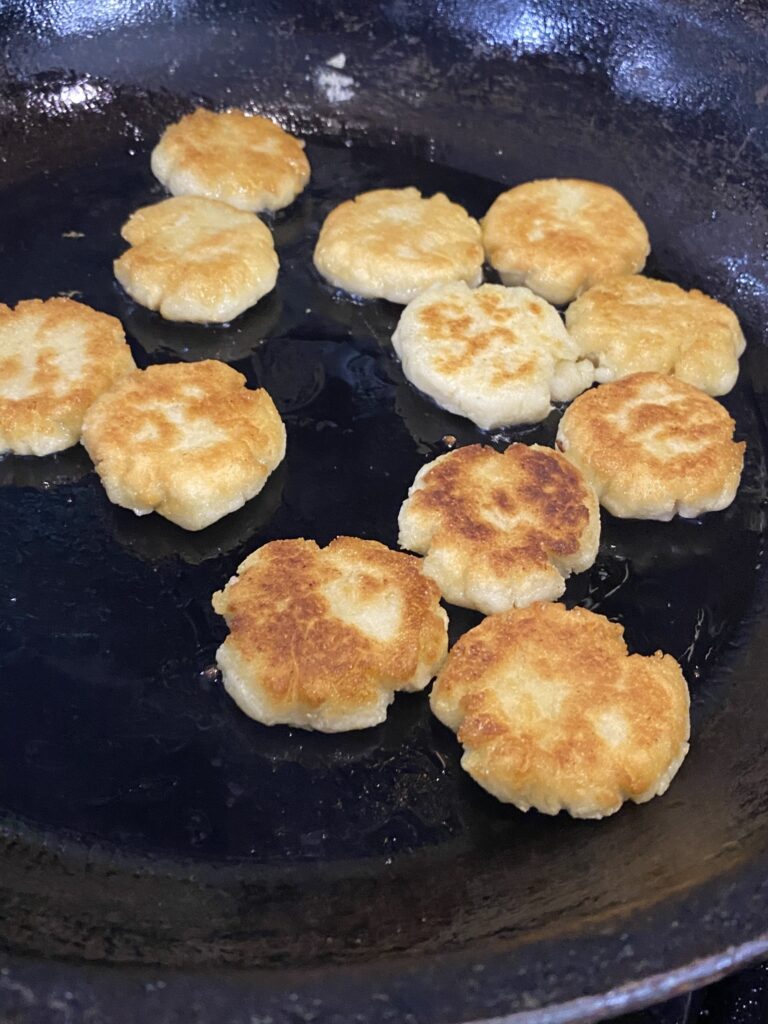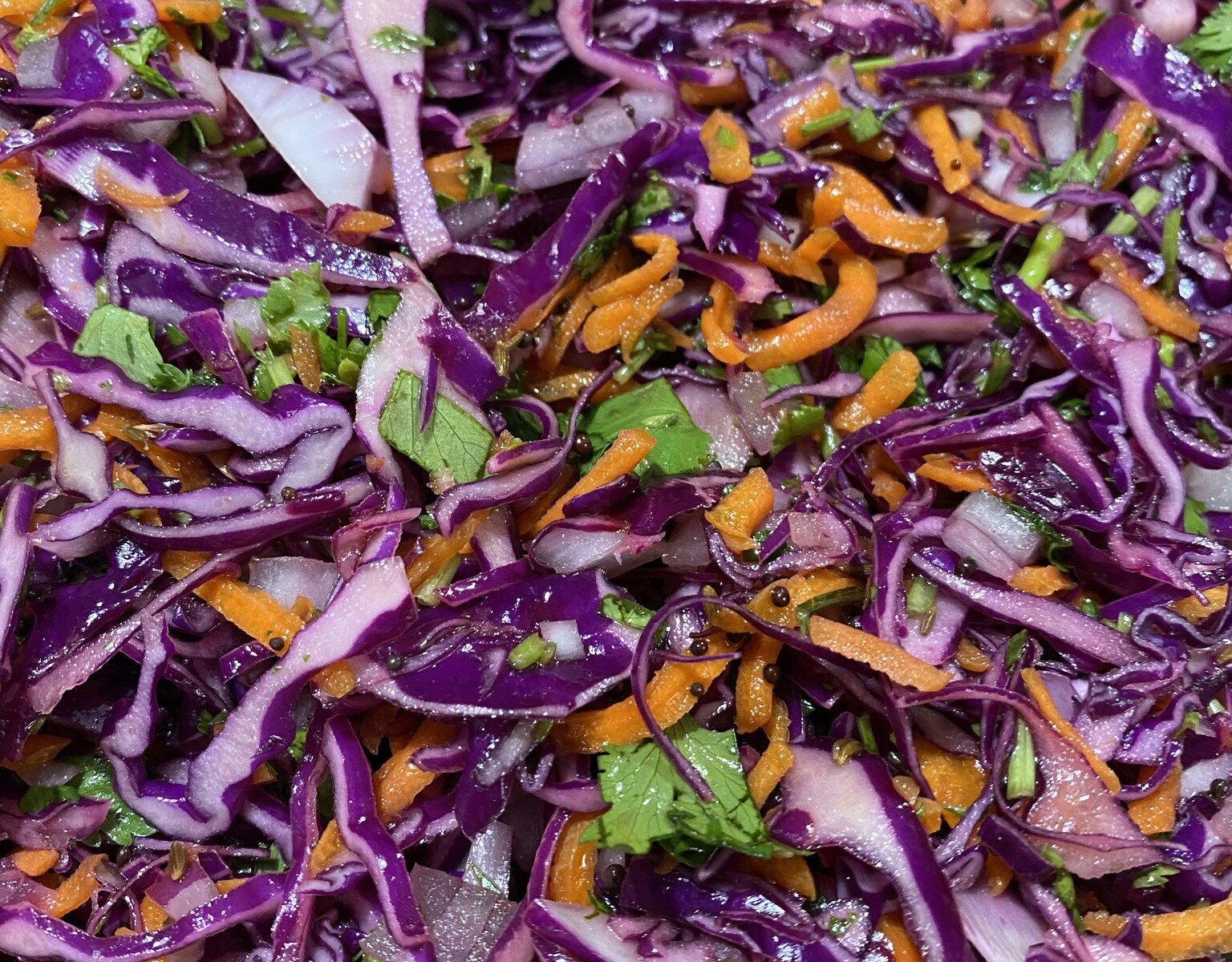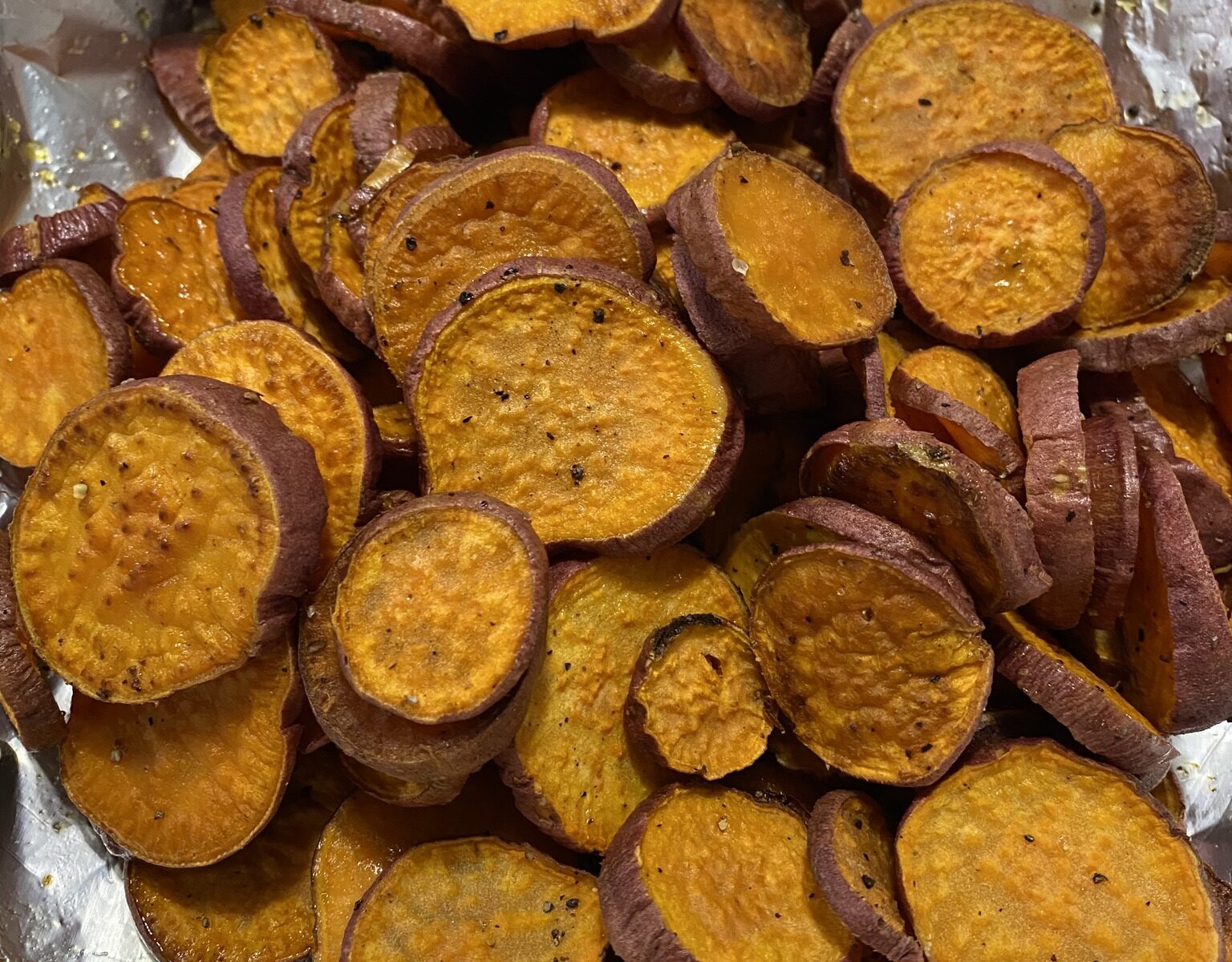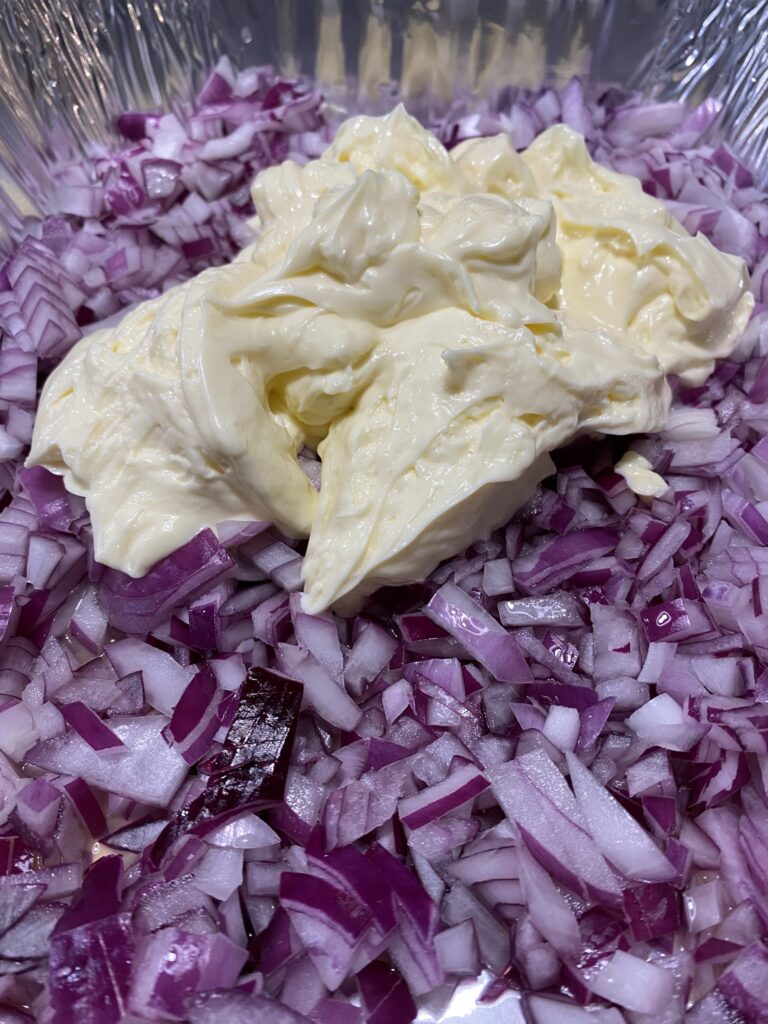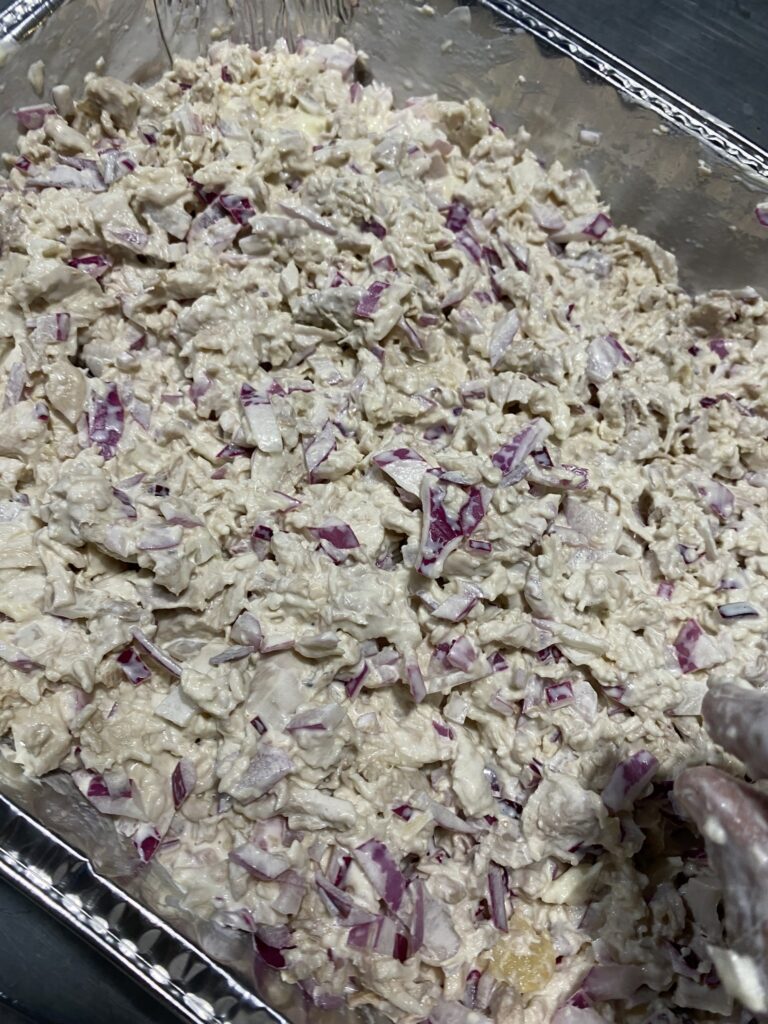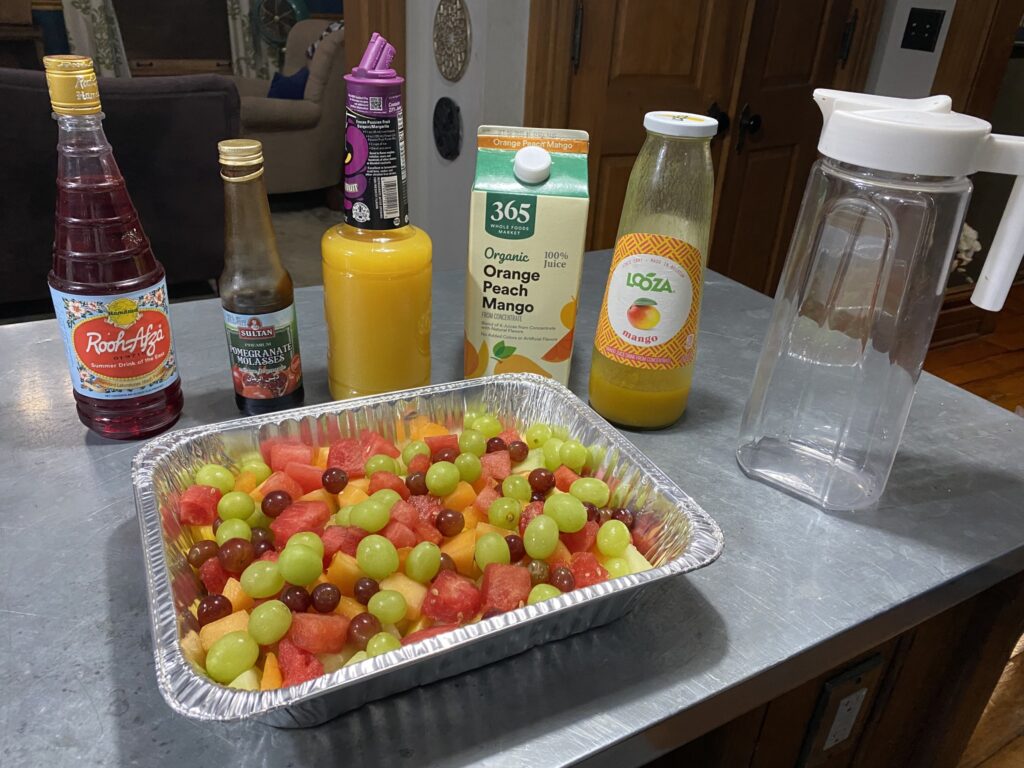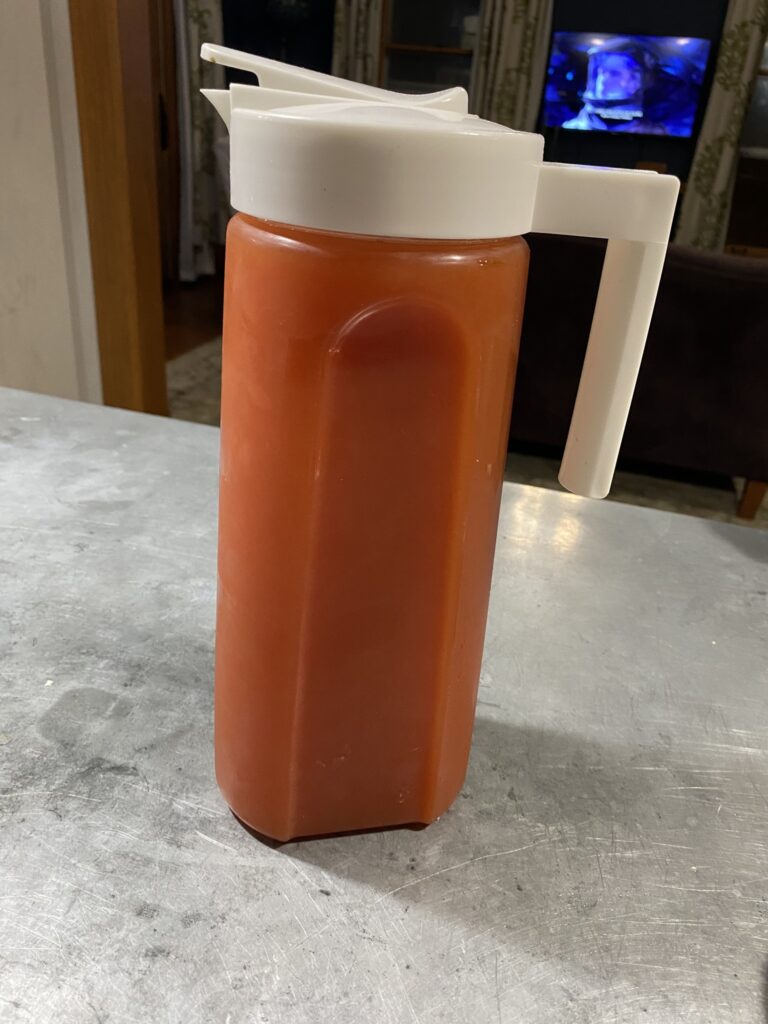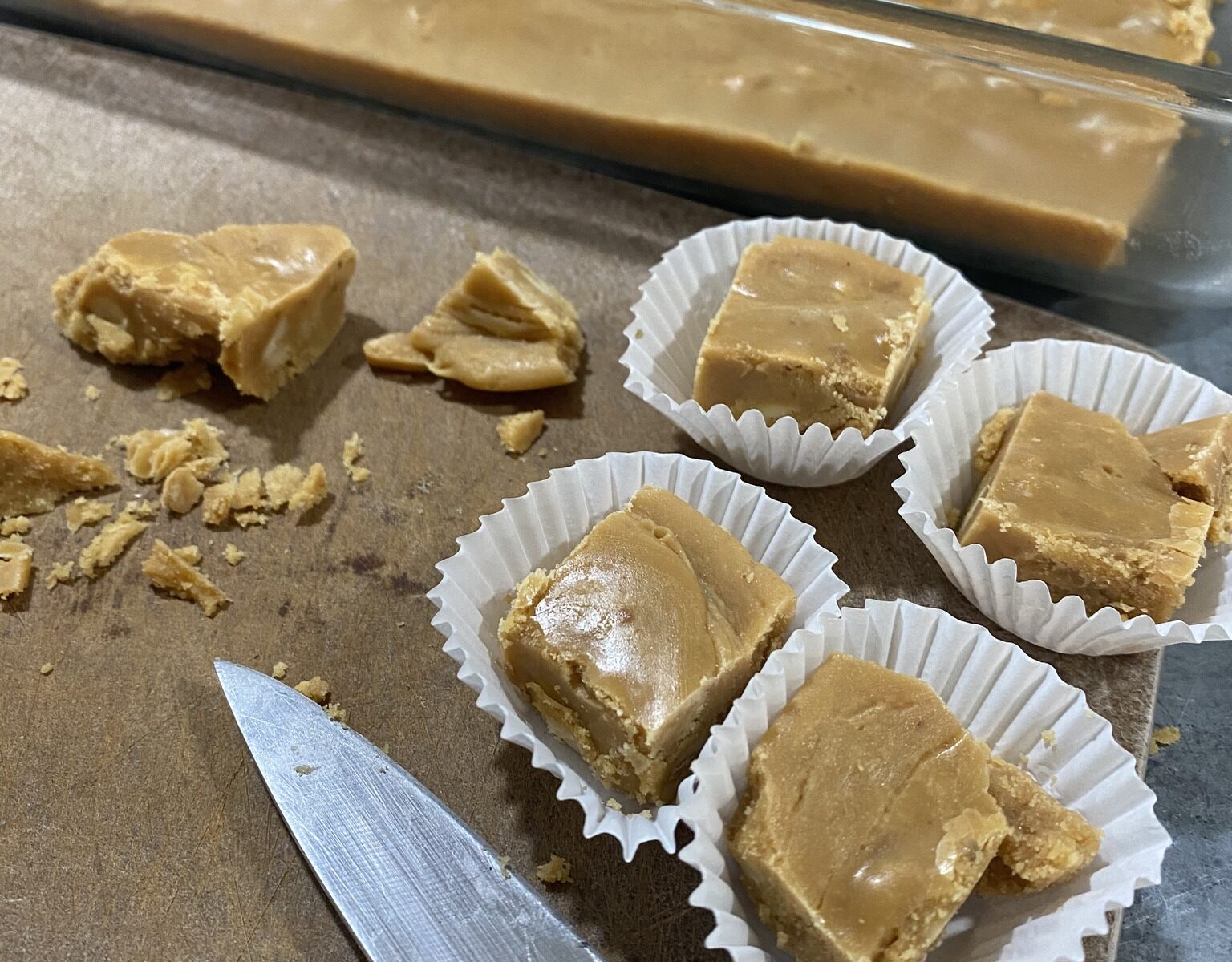So, I was a little anxious about trying to make arepas, and rightly so, I think — it’s not that they’re particularly difficult (if you can make pancakes, you can make arepas), but doing them well? I’m pretty sure mine were more doughy and dense than is ideal — they didn’t puff up the way they should have.
In my defense, I bought the wrong flour (you’re supposed to use masarepa, and I accidentally bought masa harina, and I found a substitute where you take out 1/2 c. of masa harina and put in 1/4 c. each of coconut flour and gluten-free flour), which probably had an effect. I want to try again, using the right flour, and paying a little more attention to getting the texture of the dough right (it’s a precise balance between too dry and too wet).
But oh well, the first time is often awful. At least these were edible, even if the Venezuelan refugees may have been laughing at my beginner efforts.
